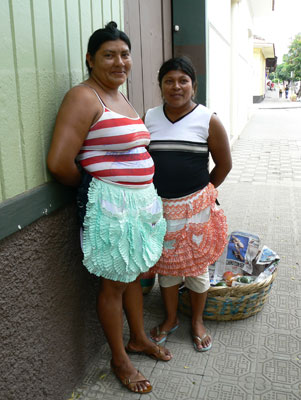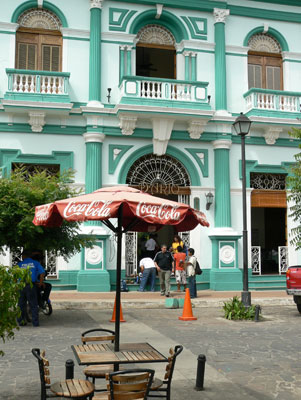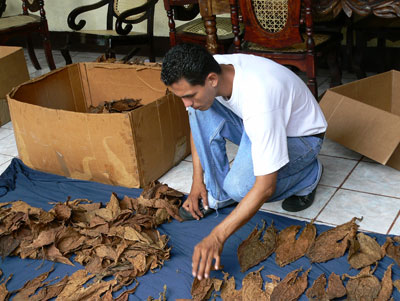Highlights of Nicaragua
Just our luck! My husband, Frank, and I picked the rainiest week of the year when we visited Nicaragua in October ’08. Fortunately, almost every day had some sun, except the Sunday we watched an NFL game in our room during a sideways rainstorm.
We spent three nights in Granada, three in San Juan del Sur and one near Managua airport before an early-morning departure. Except at the hotel in San Juan del Sur, we spoke Spanish throughout our trip.
Because we were arriving late at night in Managua and had read about crimes against tourists driving to Granada, we arranged for a transfer from the airport to our hotel ($36); our driver turned out to be the hotel’s bellman in a private car. On arrival, we learned there are also shuttles available from the airport to Granada at $18 per person through Paxeos Transportes (www.paxeos.com).
Our other transfers were easy to arrange at our hotels. Several tour companies offered shuttles, but their schedules were inconvenient. Instead, we relied on enterprising bellboys, who invariably had a friend available to drive us to our next destination for a negotiated fee.
In Granada we stayed at the historic La Gran Francia (Esquina Sureste del Parque Central, Granada, Nicaragua; phone [505] 2552 6002, www.lagranfrancia.com), where a room with breakfast cost $110 per night.
In that city we ate dinners at El Zaguan (Calle el Arsenal; phone 011 505 552 6451), located directly behind the cathedral and featuring grilled seafood or meat entrées. The parrillada we ate included grilled chicken, sausage, beef kebab, pork ribs, potatoes, rice and banana for $15.
Never strong shoppers, we skipped the tour to a nearby crafts town and focused on the small cigar factories in Granada. At Tabaco Fénix (Bo la Merced Parq Central Cost Norte), on the central park, the manager showed us a fine wooden box where cigars were aged and flavored. The secret ingredients? Dry coffee grounds strewn over the cigars and a tumbler of brandy beside them.
Just past Xalteva Church is the largest cigar factory in town, Mombacho (1/2 Cuadre al Oeste 515, Granada; phone 416 875 6783, www.mombachocigars.com), which sells under the name Dona Elba. In the central courtyard of an old home, one man selected tobacco leaves for wrappers while four employees rolled cigars. (After making a personal visit and purchase at the factory, cigar aficionados can place future orders directly with the company.)
The volcanic spine of Nicaragua offers outdoor activities and natural wonders. Through our bellman, we arranged a private tour of the area, including Mombacho Volcano, for about $50 for two people for about six hours.
From the parking lot of Reserva Natural Volcán Mombacho (www.mombacho.org [in Spanish] or www.mombotour.com [in English]), we were driven up the dangerously muddy roads in “ecomobiles” (former Austrian troop transport vehicles).
The ecomobiles depart at fixed times (8:30, 10, 1 and 3, when we visited). Arrive 15 minutes beforehand. Those waiting can tour the orchid garden and butterfly garden.
At the top, there is a panorama from Lake Nicaragua in the east to the Pacific Ocean in the west. Along mossy trails overlooking fumaroles of escaping steam, we saw howler monkeys, a coatimundi and the endemic orange Mombacho orchid.
Our tour stopped at Catarina village on Laguna de Apoyo. The lake is located in the crater of another volcano, and because of its mineral content it has a reputation as healing waters.
Although public access to the lake is free, our guide recommended that we pay ($6 per person) to use the clean bathrooms and lakeside area at Monkey Hut, where we swam in the warm, soft water.
In San Juan del Sur, renowned as a surfer’s paradise, we stayed at the Piedras y Olas (De la Parroquia 1½ cudras al este, San Juan del Sur; phone [505] 2563 7000, www.piedrasyolas.com), a Pelican Eyes resort.
All accommodations are in cabinas built up the hillside. The standard room rate, with breakfast, was $155 per night, but when we arrived we were given a rainy-season deal: stay two nights and get the third night free.
We stayed in a studio with a porch, large bedroom, bath (shower only) and an alcove with a microwave, coffeemaker and small refrigerator. There were no chairs in the room, just built-in bancos, so the only comfortable place to sit was on the porch. (The cabinas with two bedrooms and two baths have living rooms and fully equipped dining rooms and kitchens.)
Our unit, Jazmin, was located 20 steps above the restaurant/bar and 200 steps below the infinity lap pool with its stunning view over the bay. Employees refer to the property as “the stairmaster.” Guests can get a ride to the upper cabinas.
(It was clear that both La Gran Francia and Piedras y Olas are popular for destination weddings.)
Breakfast was served poolside at the restaurant La Cascada. My husband’s favorite was a dish of pork, potatoes, onions and chilies. For lunch we liked the lobster BLT ($12.25).
Each evening we walked 10 minutes down to the bay to El Timon, where grilled or fried seafood with potatoes, rice, salad and a beer cost $30 for two, with tip.
The highlight of our trip was the night tour ($30 per person) to observe Olive Ridley turtles in nesting season. We booked it that morning at the Casa Oro International Hostel (San Juan del Sur; phone 505 2 568 2415, www.casaeloro.com), where the tour began at 8 p.m. After a 30-minute presentation about not interfering with the turtles, our group squished into the back of a truck and took an hour-long ride to the beach.
As our eyes grew accustomed to the dark, we began to spot the huge turtles crawling out of the sea, digging deep holes with their flippers and laying their eggs. At the same time, eggs that had been deposited a month earlier were cracking, and tiny hatchlings were emerging and skittering down to the water.
Stealing eggs from the nesting grounds, while long a local custom, is now against the law. One member of our group faced the ethical dilemma when offered cooked turtle eggs by a host family she was staying with.
The second highlight of our trip was surviving the ride to and from the turtle-nesting beach on mud roads made perilous by the rains.
Finally, in Managua and close to the airport, we chose the Camino Real (Km 9.5 Carretera Norte, Managua; phone [505] 2255 5888, fax 2263 1380, www.caminoreal.com.ni) because we belong to the hotel chain’s frequent-stay program. This Camino Real is owned by a Spanish company, however, and doesn’t participate in the Mexican hotelier’s program. We paid $109 per night.
Dinner there was a lonely, disappointing meal, but there were no restaurants within a safe walking distance. We left the hotel before breakfast service began the next morning.
MARTHA SPRING
Albuquerque, NM



